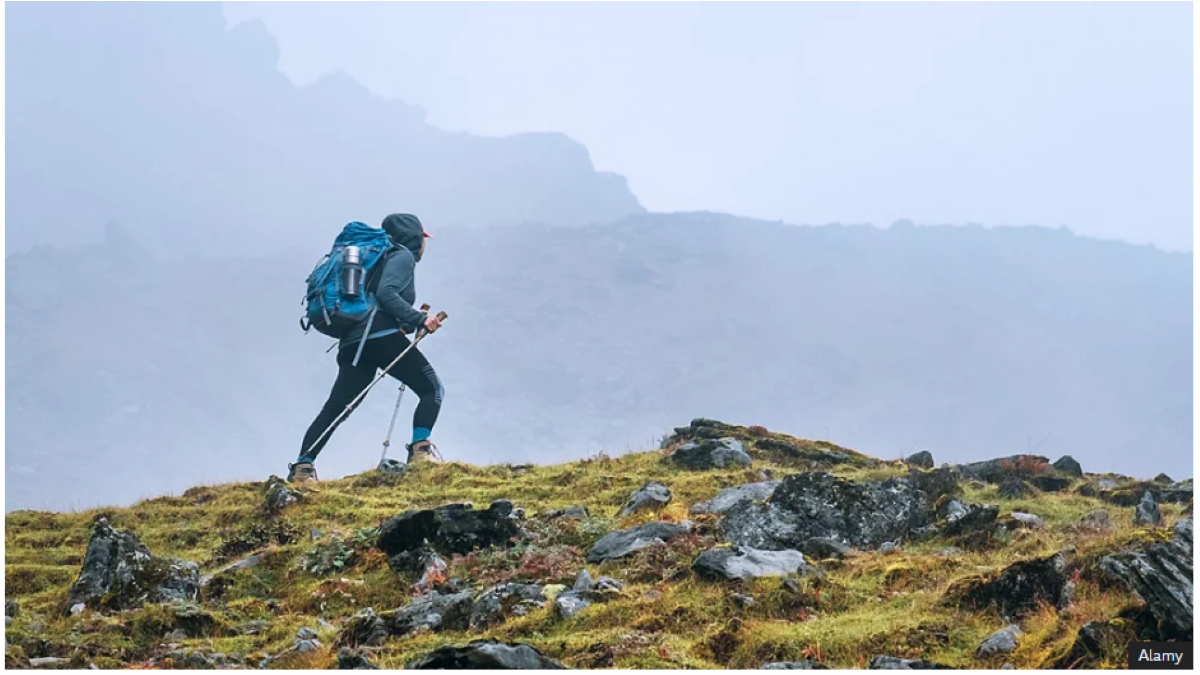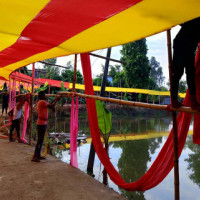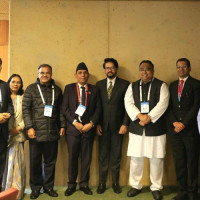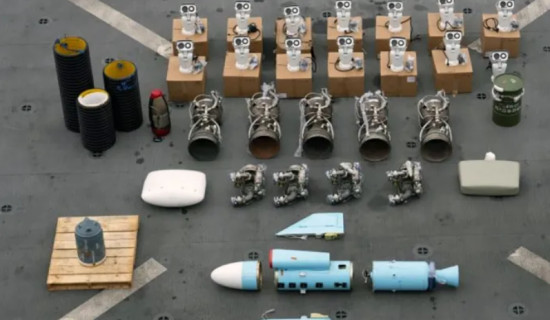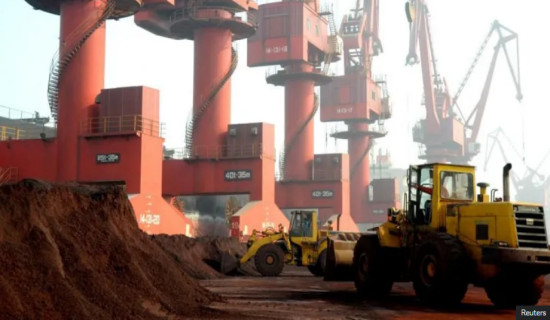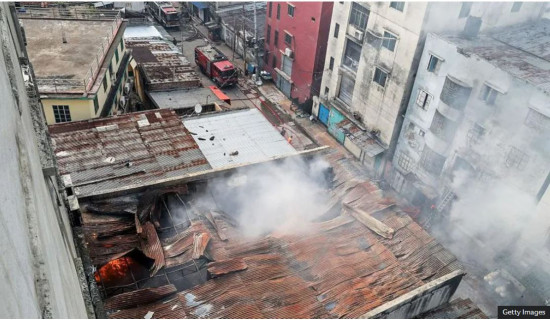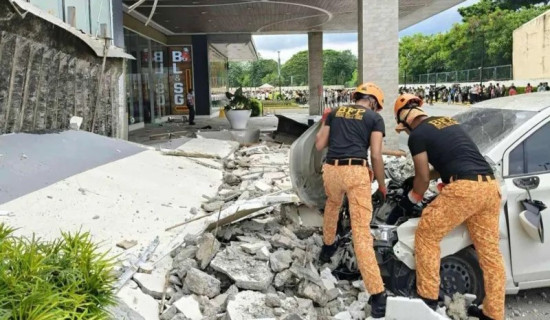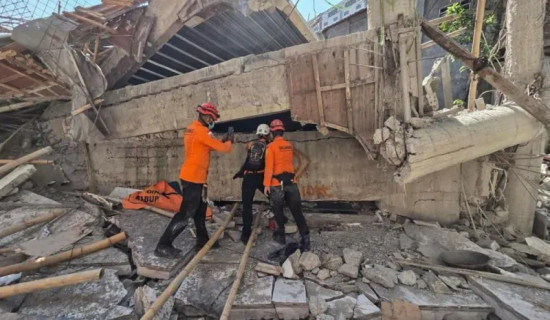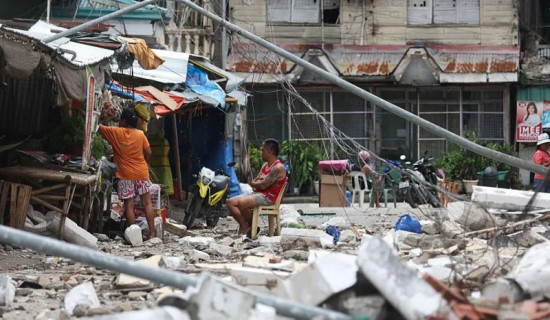- Friday, 24 October 2025
Why 'best time to visit' no longer applies
Tarang Mohnot
I spent April and May this year travelling across Nepal – prime trekking season and often billed as the "best time to visit". Almost every online guide promised clear skies and comfortable temperatures. Instead, I found hazy polluted air and low visibility, especially at lower elevations. Early monsoons swept across the country, briefly clearing the smoke but replacing it with downpours I hadn't prepared for. The gap between expectation and reality was jarring.
This isn't just a Nepal problem; travel is facing climate-driven disruptions everywhere. Australia recorded its hottest March on record this year, with temperatures 2.41C above the historical average. In Japan, cherry blossoms are blooming earlier than ever. Across the globe, longer summers, shorter winters and erratic "false springs" are now routine.
"The planet's warming since around 1980 is making heatwaves, droughts and floods more frequent and severe," says Jonathan Erdman, senior meteorologist at The Weather Company's weather.com. "All three of these are most common during summer, when travel peaks."
But the unpredictability now stretches year-round. "Extremely wet and dry periods can happen any time of year – including shoulder season – if the weather pattern gets stuck for a while," Erdman adds.
Traditionally, "best time to visit" meant peak travel season: a sweet spot of good weather and easy access to experiences. Over time, the advice became more tailored. An Italy travel guide might now suggest April and October for fewer crowds, February for Venice Carnival or January for skiing in the Dolomites – timeframes that cater to more specific experiences beyond just "good weather".
But despite these refinements, the assumption lingers that seasons will continue to behave as they always have. That Dolomites ski guide probably won't mention that snowfall across Europe has been unreliable.
Juliana Shrestha, co-founder of Duluwa Outdoors, a female-led Nepal-based company that curates educational experiences in the outdoors, says this inconsistency is one of their biggest challenges. "Earlier, when clients asked for a snow trek in December, we could suggest options like Annapurna Base Camp," Shrestha says. "But now, it's harder to say confidently whether conditions will be right. We just don't know anymore."
That line – we just don't know anymore – feels far too familiar. It creeps up in my travels, in conversations with local guides and increasingly in academic studies. Stanford researchers, for instance, have found that warming trends may be making even short-term predictions less dependable. Why then, is this reality often missing from travel advice and planning?
Part of the problem lies in how information flows – or doesn't. Shrestha notes that in large tour operators, siloed teams often mean the person selling a trip has never set foot in the destination. "So when it comes to critical details like current weather conditions, or even basic advice like 'bring a mask because of the pollution', they either don't know or don't think it's necessary to share," she says.
There's also a fear of scaring off potential bookings – a risk some companies aren't willing to take. But omitting climate realities has consequences: travellers arrive unprepared; experiences suffer; and local businesses and reputations take a hit. "There's nothing wrong with wanting to make money," Shrestha says. "But are you treating customers like numbers, or are you guiding them into a thoughtfully curated experience, with transparency?"
This gap between what's expected and what's real is further compounded by traveller perceptions. "They don't build an idea of a place based on reality, but an idealised version, and it doesn't get updated," says travel writer and journalist Laura Hall. Part of it stems from a reluctance to accept that some travel experiences simply aren't the same anymore. Social media deepens this dissonance, with curated destination reels rarely revealing the season when they were filmed. Timing adds yet another layer of complexity, since most people book trips months in advance. "It's unlikely you'll be scrolling through news articles while booking and stumble upon a warning that it's going to be over 40C," Hall says.
The solution isn't blame, Shrestha says, but empathy – and adaption. For tour operators, preparing travellers for disruptions is now the bare minimum. This could mean updating packing lists for unpredictable weather, setting realistic expectations, encouraging comprehensive travel insurance, offering flexible booking policies and having backup plans for when itineraries fall through. Crucially, companies need response systems to manage on-the-ground crises, including extreme weather and natural disasters.
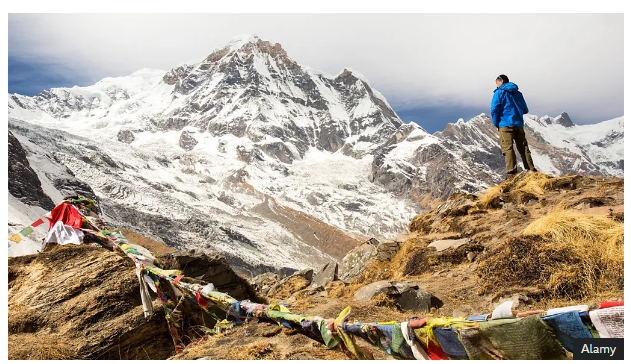
At Duluwa Outdoors, the team relies on local expertise, making sure their guides have visited the destination recently. "While we can't predict exact conditions at the time of booking, this helps us give real-time updates closer to the trip," says Shrestha. What seals the deal is a thorough vetting process that digs into why a client wants to do a particular trip. "We don't believe in blanket answers like, 'September is the best time'," Shrestha adds.
With extreme weather on the rise, more travellers are shifting to shoulder season trips, with the added perk of fewer crowds and better deals. "We're seeing this trend really take off in Europe," says Susanne Etti, global environmental impact manager at Intrepid Travel, "with global bookings for some of our top summer spots, like Italy, Spain and Portugal, shifting to spring and autumn." Intrepid has also seen a 21% year-on-year rise in Scandinavian travel, driven by people seeking cooler alternatives to scorching and crowded Mediterranean summers. In response, the tour operator is expanding its Nordic offerings by 50% next year.
Off-season travel is also gaining ground as travellers seek out newer, more niche experiences. Shrestha notes a rise in domestic bookings during the monsoon this year, with people actively chasing waterfalls, lush greenery and misty hills. While social media has certainly amplified this curiosity, the changing weather itself has played a role. Seasons that were once written off as too wet or too inconvenient are beginning to surprise travellers. "People think June in Nepal means heavy downpours, but that's not always the case anymore," Shrestha says.
None of this means "best time to visit" guides will disappear. But relying solely on historical seasons is no longer enough. To stay nimble, today's travellers are turning to local advice. When in Nepal, for instance, I found countless Reddit posts from residents warning of increasing haze in trekking regions – information I wished I'd seen sooner. Alongside social media platforms, websites like Travellerspoint host forums where travellers exchange real-time updates.
Beyond word-of-mouth, niche platforms are stepping up with hyper-local insights. Surfline delivers daily weather reports from thousands of surf spots across the world; Windy visualises wind, rain and storm systems in near real-time; while air quality trackers like IQAir are now must-haves for sensitive travellers.
Flexiblity and curiosity go a long way, too. When bad weather in Nepal meant I couldn't hike as much as I'd hoped, I found other ways to move – indoors. Turns out, there was a skating rink and a climbing gym right near my base.
There's no sidestepping it – the way we travel is going to have to change, more than it already does. Extreme weather disruptions are only going to intensify, even if global warming stays within 1.5C, says the Intergovernmental Panel on Climate Change. Etti sees this as a necessary moment for reckoning and reinvention. "This reality gives us a real chance to rethink how we design trips, stay agile and build a future for tourism that's genuinely better," she says. "A future where destinations can grow sustainably and actually offer travellers a richer, more meaningful experience than they do now."

